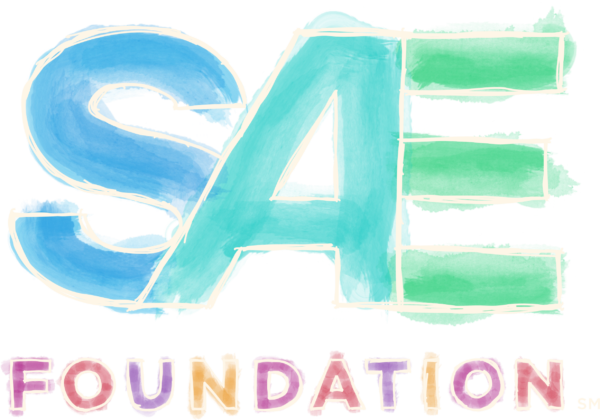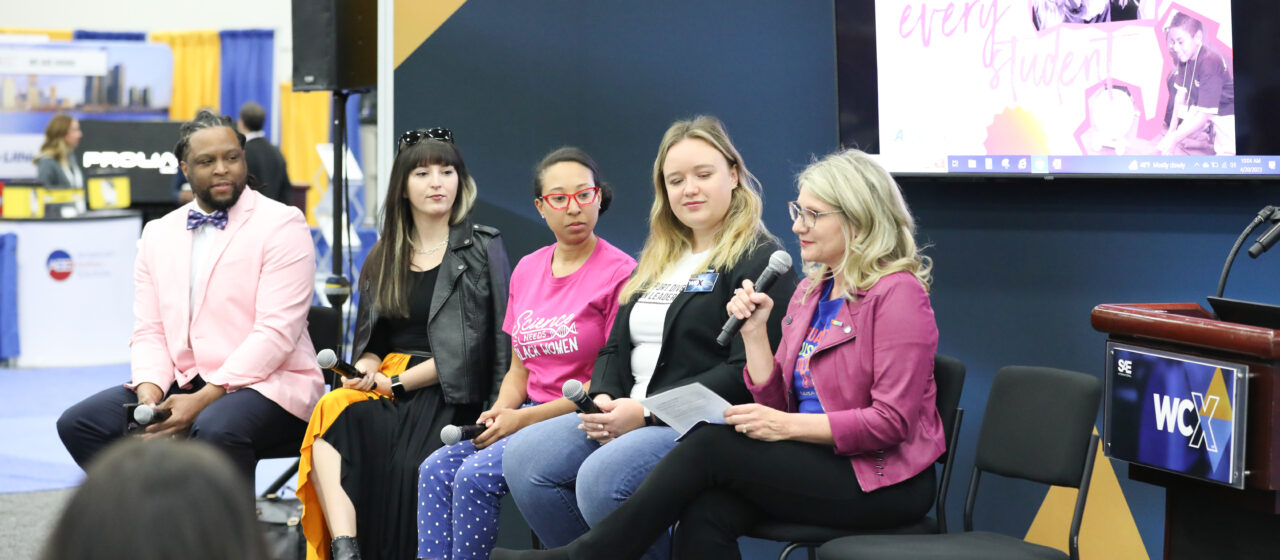WCX 2023: Panelists’ DEI Experiences and How Companies Can Move the Narrative Forward

Cheryl Thompson, Founder and CEO of the Center for Automotive Diversity, Inclusion & Advancement (CADIA), moderated a powerful discussion on diversity, equity, and inclusion (DEI) in the automotive industry with an all-star lineup of panelists from engineering, education, and innovation at the 2023 WCX™ World Congress Experience.
- Katelyn Davis, Communications and Marketing Professional, co-founder and co-author of Women Driven Mobility, and advisor on the Michigan Science Center’s Young Professional Advisory Council
- Andre Daughty, Educational Consultant, National Faculty with Buck Institute for Education, former K-12 teacher and administrator, and inspirational speaker.
- Victoria Thompson, Customer Success Account Manager at Microsoft, ISTE Community Leader, and a notable keynote speaker; named one of the “Top 30 K-12 IT Influencers” by EdTech Magazine (2021) and “20 to Watch” by ISTE (2023)
- Rebecca Vollmann, Product Management Engineer at ABB/B&R Industrial Automation, Vice Chair & Treasurer of the SAE Florida Section, and recipient of the SAE International Award for Outstanding Student Leadership in STEM Honoring Max Rumbaugh in 2023
Throughout the discussion, panelists explored the meaning and significance of DEI by sharing their personal experiences, from classrooms to boardrooms and assembly lines. The speakers also offered their unique advice for executives, engineers, and educators alike. They included steps we all can take to advance DEI today and improve for the future.
Here are some of the key takeaways from this dynamic conversation.
The importance of diversity, equity, and inclusion in organizations: In the workplace, it’s crucial to recognize the importance and benefits of having a diverse workforce, especially in terms of representation and the intersectionality of different dimensions of diversity.

Cheryl asked the audience to visualize an engineer and questioned whether the imagined engineer looked like them or moved like them. This prompted the audience to reflect on their preconceived notions and disrupt the bias that exists regarding what an engineer ‘should’ look like.
Recent data (Figure 1) shows that representation decreases for women, men of color, and especially women of color as they move up the organizational ladder. It’s also important to recognize the different dimensions of diversity, including primary and secondary dimensions, and cultural diversity within organizations. The real meaning of equity, highlighted during the panel, is addressing people’s unique needs rather than everyone receiving a universal treatment.
Representation is essential: Representation is crucial for attracting and retaining students and employees from diverse backgrounds.

“Whenever I go to schools, and the kids ask me who I am, what I’m there for, and I say ‘I’m Victoria Thompson and I work at Microsoft,’ the first thing that comes out of their mouths is ‘that is so cool that you work at Microsoft!’ And the second thing they say, when there are children of color in the school, is, “so I can work at Microsoft one day?’ I didn’t know that Black people worked at Microsoft.’ Those are literally the words that come out of their mouth,” said Victoria.
In the automotive industry, representation involves finding subject matter experts from different backgrounds and encouraging them to speak about their interests and experiences to increase representation and promote inclusivity. This is especially critical for students. If students don’t see someone who looks like them achieving their dreams, they feel less motivated to pursue their dreams.
“When I was getting started in automotive 15 years ago, I did not see people like me. I walked in every day to a building and sat in a department full of men. I didn’t have the opportunity to learn and model from other women. So I’ve worked to make sure that other women or minorities, when they come in, that they can see themselves in this place long term,” said Katelyn.
DEI pushback and how to break STEM stigma: It’s important to recognize the importance and significance of implementing DEI into a system. Although there is resistance, it can be attributed to the lack of awareness of the benefits DEI can bring from an organizational standpoint as well as help encourage students to investigate a career in STEM.
While reflecting on his mother’s struggles as being the first Black woman to graduate with a music degree in an Oklahoma college, Andre shared that even now later in her life, she can still remember all of her colleagues who disrespected her because of the color of her skin. He notes,
“It’s a challenging time right now. When the pushback happens, pause and think to yourself: ‘In 5 years, in 10 years, in 20 years, what side of history will I be on?’”
“This industry responds really well to data, we know that. We know it’s really driven by the bottom line, and so there are incredible stats that Cheryl’s organization can share that really prove why focusing on DEI is good for your business, and it’s good for your organizations in the long haul. Understanding the industry and what drives it is going to be a big piece to having success in having DEI in your organization,” commented Katelyn.

Welcoming and including students who aren’t proficient in STEM and giving them the resources they need to thrive can further stimulate a desire to pursue a career in the industry. Victoria also noted that it’s important to be completely transparent about a career in STEM to students who are curious. Social media can warp perspectives to only shine light on the ‘fun parts’ while foregoing the practice and time a career in STEM takes.
Retention and recruitment initiatives: While there is a lot of focus on recruiting a diverse workforce, there is often not enough emphasis on retention and developing then advancing diverse talent once they are hired.
Andre posed the questions for reflection, “If you want to bring diverse backgrounds to your job, to your industry, once they are there will they be safe? Will they be welcomed? Will they belong?”
Companies need to create a safe and welcoming environment where diverse employees feel appreciated and included, and where they have opportunities for growth and advancement.
“If you ask someone with that diverse background what more could we be doing, I guarantee you they will give you a laundry list of ideas and there will be some good ones that you can invest in your workforce and ask–how do we make this more equitable?” added Rebecca.
Recruiting through social media is an effective way to diversify a workplace, not only in race, but also in age. Keeping up with trends in social media applications can encourage companies to find diverse talent in places that are often looked over.
Continuous Learning: Continual learning is crucial to stay on top of the latest changes and trends in the automotive industry. Authenticity and a willingness to learn and observe are also essential to approach the industry and group discussions.
“Just open your mind to new possibilities because the younger workforce, they want to teach you. They don’t want anybody to be left behind in the times. They want to have that diverse workforce. They want to have everyone be a part of this equitable future. No one is trying to leave anyone out of the equation” added Rebecca.
“Where your awareness flows, your energy goes,” commented Victoria. Being increasingly conscious of the things going on in the world around you that impact your organization can affect the time dedicated to nuances that might have been overlooked otherwise.
Katelyn noted the importance of learning through different environments and experiences, “Being in audiences like this, listening to other people talk, you absorb so much. I think all of this work will continue to be a learning process for everyone.”
“We just barely brushed the surface, but now it’s time to do the work,” Andre shared in parting thoughts. “Don’t let the conversation stop here. Let it begin here.”
Learn more about the SAE Foundation mission and life-changing impact here!

